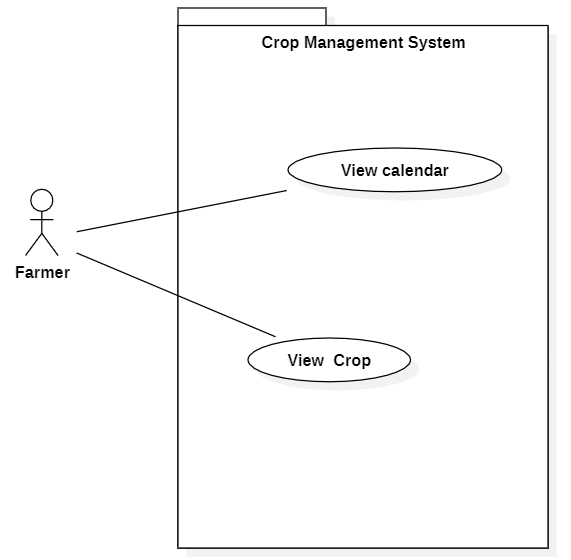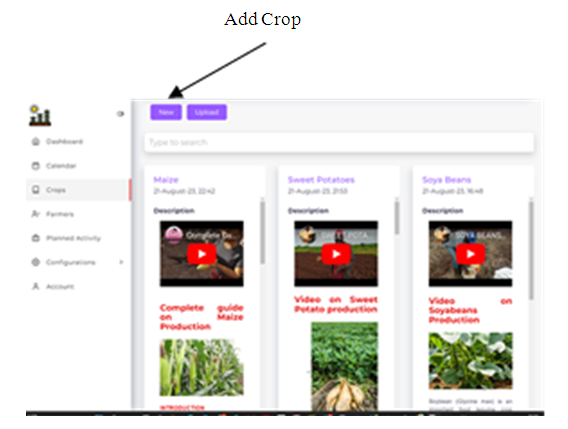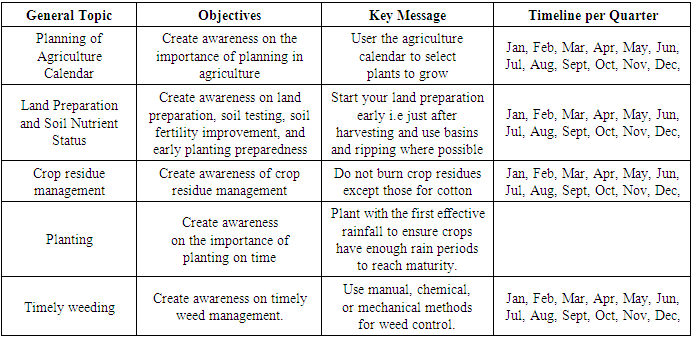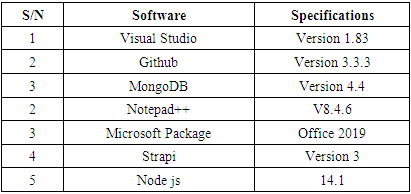-
Paper Information
- Paper Submission
-
Journal Information
- About This Journal
- Editorial Board
- Current Issue
- Archive
- Author Guidelines
- Contact Us
Computer Science and Engineering
p-ISSN: 2163-1484 e-ISSN: 2163-1492
2023; 13(1): 1-7
doi:10.5923/j.computer.20231301.01
Received: Nov. 13, 2023; Accepted: Dec. 1, 2023; Published: Dec. 13, 2023

Design and Implement a Crop Management System
Gregory Kakoma Chikanwa , Simon Tembo, Ir. Donat M. Ngendo
Department of Electrical Engineering, University of Zambia, School of Engineering, Lusaka, Zambia
Correspondence to: Gregory Kakoma Chikanwa , Department of Electrical Engineering, University of Zambia, School of Engineering, Lusaka, Zambia.
| Email: |  |
Copyright © 2023 The Author(s). Published by Scientific & Academic Publishing.
This work is licensed under the Creative Commons Attribution International License (CC BY).
http://creativecommons.org/licenses/by/4.0/

Farmers in Zambia of Chongwe District rely primarily on services provided by agricultural extension officers to boost crop production. These officials aim to visit farmers throughout the agricultural calendar covering all eight (8) zones within each agricultural camp at least twenty-four (24) times a year and twice (2) a month to impart farmers with knowledge on crop management. They face various challenges, in terms of reaching remote and rural areas. This project highlights the necessity and importance of agricultural extension services in supporting farmers. To solve this problem, an e-agriculture extension application has been designed and developed to alleviate the challenges faced by the field workers. The e-agriculture extension application aims to provide basic knowledge in crop management and how to plan for a successful agricultural calendar, especially for remote and rural farmers. Extension workers typically rely on the agricultural calendar produced by the Department of Agricultural Methodologists. The application was built using an agile methodology that allows each sprint to be carefully planned and approved by the client before moving on to the next.
Keywords: Extension Officer, Agile, Scrum, Agriculture Camp, Agriculture Zone, System, ICT
Cite this paper: Gregory Kakoma Chikanwa , Simon Tembo, Ir. Donat M. Ngendo , Design and Implement a Crop Management System, Computer Science and Engineering, Vol. 13 No. 1, 2023, pp. 1-7. doi: 10.5923/j.computer.20231301.01.
Article Outline
1. Introduction
- Farmers in Zambia primarily rely on the services provided by agriculture extension officers to bolster their crop production. While it is expected that farmers should receive regular visits from extension officers throughout the agricultural calendar, they often encounter various challenges in reaching remote and rural areas [1]. This article underscores the imperative need and significance of agricultural extension services in supporting farmers. In response to these challenges, we introduce an e-agriculture extension application designed and developed to alleviate the issues faced by extension officers.This innovative application is aimed at equipping remote and rural farmers with fundamental knowledge of crop management and facilitating the creation of successful agricultural calendars. Extension officers typically employ an agriculture calendar prescribed by the agriculture methodologist at the Ministry of Agriculture's headquarters as their primary tool for crop management and planning. This article will provide an overview of the introduction, objectives, project scope, literature review, the methodology employed in system development, results, challenges, and conclusive summary.The government of the Republic of Zambia has adopted the use of electronic extension services by embracing the use of information and communication technology (ICT) to cover areas that do not have sufficient agriculture extension officers. The adoption of this technology is meant to benefit from the 2,000 towers that the Ministry of Transport and Communication planned to erect countrywide [2]. Amid the Coronavirus Disease 2019 (COVID-19) pandemic, farmers encountered challenges in crop management due to the unavailability of extension officers as a result of COVID-19. Farmers possess knowledge about their environment and farming system. However, they are mandated to receive visits from agricultural extension officers at least twenty-four (24) times a year, twice (2) a month in each of the eight (8) Zones within each agriculture Camp. These visits assist in crop and disease management and the recommendation of suitable pesticides for specific crops. Unfortunately, the funding reduction due to COVID-19 made it difficult for farmers to access these extension officers [1].
 | Figure 1. Budget allocation towards Extension services for 2022 |
1.1. Specific Objectives
- The objectives of the research were as follows to:i) To identify the system used by Farmers in crop management.ii) Evaluate the system for any improvement to enhance their knowledge in crop management.iii) Design and implement a system that will answer to their needs.
1.2. Scope of the Project
- This project will be piloted for farmers in Chongwe District of Zambia.
2. Literature Review
- The literature review provides a brief history of the research topic, identifying pivotal studies and publications that focus on the advantages and disadvantages of the specific study. It underscores the key issues in the study by highlighting the gaps that need to be addressed [4]. Other developers have created similar applications for farmers. This review aims to compare various mobile applications developed by different parties.
2.1. Related Works
- The main concern that has been observed in many institutions and organizations is the lack of good systems that provide suitable information to their clients or users. This problem has made most of the institutions depend on manual systems that have proved to be inefficient and ineffective. Ministry of Agriculture in collaboration with Smart Zambia Institute and the University of Zambia developed a system that allows farmers to access e-extension services in Zambia. The portal provides information modules on how to manage the crops in Zambia in text and picture format only. It does not have an agriculture calendar showing activities for each month. The new system for e-extension has a provision where Farmers can either choose a video or text with pictures [5].The use of Android mobile applications in Agriculture contributes to an increase in agriculture production. It is a core component that helps in increasing the productivity of crops and indirectly increases the Gross domestic product (GDP) of India to reduce poverty. Koli and Raut developed an application that is user-friendly and able to be used by farmers and agriculture institutes to determine the average pH of the soil, soil type, and average temperature, by doing this a farmer may exactly know the type of crops that can be cultivated on a particular land with a certain soil type [6]. This shows that e-extension can still be achieved by providing accurate information to the farmers.Shiferaw and his colleagues developed a system that was only able to manage potato crops for the farmers in Ethiopia. The system was aimed at examining two types of disease namely wilt and late blight. The system built by Shiferaw and friends was used as a survey, to ascertain the knowledge that farmers have concerning the two diseases compared to what the system was able to identify. The only drawback with this system is that it was only able to deal with one specific crop and two specific diseases that would have reduced the yield of potatoes in the selected religion. The developed system will cover a wide range of crops mostly cultivated by the farmers in Zambia [7]. India State Agriculture University develops systems that provide extension services to farmers. These technologies are important because they are the backbone of agricultural development in the country. One of the reasons cited for the promotion of these technologies is the absence of extension officers [8].For farmers, having the correct agricultural information is crucial because it helps them maximize output while making the most use of the resources that are available. Farmers are guaranteed fair and prompt access to the best extension services by the extension officers. The conventional door-to-door extension method is still crucial for disseminating agricultural information, but it is presently facing harsh criticism for its inability to provide timely and equitable access to such information. The majority of farmers are looking for electronic information systems since they can be accessed from anywhere at any time. The e-extension could be considered the future extension approach of agriculture information [9].Saravanan Raj observed that the e-agriculture prototype demonstrated a 3.6 times reduction in the cost of providing extension services to each farmer from Rs. 2,400 (USD 53) compared to the conventional extension system. However, this article argues that areas that are less developed need to use a hybrid form of extension services to take care of the post-harvest reviews of India to reduce poverty [10]. Most of the time farmers fail to decide on the type of crops, fertilizers, and pesticides to use when planning during a particular agriculture season. Shubham built an application that helped sustain agriculture development in India. This application was developed to help farmers in decision-making regarding the type of crops and other agricultural inputs required during the farming season. These are types of applications that can be very useful to bridge the gap between the farmers and the extension officers [11].
2.2. Analysis of the Current System
- The current system used by the Ministry of Agriculture e-extension services portal lacks the provision of video tutorials, despite being suggested by farmers for more effective and straightforward demonstrations, as opposed to relying solely on text format. Additionally, the present portal is not user-friendly, particularly when navigating to specific content [12].
2.3. Advantages of the New e-Extension System
- It is user-friendly with a simple user graphical interface. Farmers will be able to follow the annual agriculture calendar activity for planning purposes. They will also have the option to watch video tutorials instead of solely relying on text.
3. Methodology
- According to Satzinger and friends, research is considered to be a scientific investigation, and the approach used to investigate is called research methodology. The crop management System will provide information about the management of crops and how to eradicate the diseases that commonly affect the crops [13].Satzinger and friends define an information system as a collection of interrelated components that collect, process, store, and provide the output information that is needed for a complete business undertaking. An application is defined as software that can be executed on a computer device to carry out a specific function [13].The current system was developed using an Agile methodology. Agile is one of the top software development methodologies mostly used by developers as can be seen by the pie chart below in Figure 2. [20]
 | Figure 2. Show different Methodology [20] |
 | Figure 3. The agile product development process [21] |
3.1. System Requirements
- The University of Zambia wrote to the Ministry of Agriculture and requested for collaboration in the designing and implementation of an application that will assist the farmers in Zambia with e-extension services. The project was to be piloted in the Chongwe District of Zambia and all the requirements were collected through interviews conducted with agriculture Methodologists and extension Officers under the Ministry of Agriculture.
3.2. Study Design
- A research design is nothing but a framework or a plan that guides in collection and analysis of the data. It is a blueprint that is followed in completing a study. It works as a blueprint for the collection measurement and analysis of data. It is like a map that is usually developed to guide researchers in software development [14].
3.3. Research Instruments and Tools
- These are tools and methods that are used to collect data for the research being done [15]. In this project, the researcher used the interview method. In collecting data for the project from a methodologist at the Ministry of Agriculture [1].
3.4. Interviews
- Interviews were conducted with the Agriculture methodologist at the Ministry of Agriculture and the Extension Officers in Chongwe to ascertain the methods used in the provision of extension services to the farmers in Chongwe.The following were the findings:The ministry uses an agriculture calendar with outlined activities for each month which farmers are required to follow:-ii) The extension officers conduct meetings with Farmers at least twenty-four (24) times a year and activities are outlined for every quarter as shown in the table below.
3.5. Agriculture Calendar
3.6. System Requirements
3.7. System Development
- The system was developed using software tools outlined in Table 3 above. The use cases were designed using Unified Modeling Language (UML). UML is a language for specifying, visualizing, and documenting the system. The goal of this was to produce a model of the entities that are involved in the project [22].There are various kinds of methods that the researcher considered in developing an application as shown below:(i) A Use Case Diagram(ii) Sequence Diagram(iii) Collaboration DiagramIn designing and developing the UML diagrams for the project, two (2) modules were considered by the researcher; namely, the Admin and User (Farmer) modules while considering the requirements as collected from the experts at the Ministry of Agriculture.The Admin will be able to:(i) Login(ii) Manage Crop(iii) View/Update Crop(iv) Add Camp(v) Add Zone(vi) Create Report(vii) Manage CalendarThe User (Farmer) will be able to:(i) View crop(ii) View Calendar
3.8. Use Case Diagrams
- A use case is a sequence of interactions between the actor and the system. An actor is represented as a stick figure on a use-case diagram. The system is represented as a box. A use case is represented as an ellipse that is inside the box. The Communication associations link actors with the use cases in which they participate. [16, p. 16]. The purpose is to show the interactions between the use cases and the actors and also to represent the system requirements from the user’s perspective [17, p. 65].
 | Figure 4. Admin (Extension Officer) Use Case |
 | Figure 5. Farmer Use Case |
3.9. Sequence Diagram
- A Sequence diagram shows a complete flow of specific use cases. It shows the communication between different objects in their sequence [18]. A Sequence diagram represents the behaviour of a series of sequential steps over time depicting the workflow of messages passing and how elements achieve a result. They capture the flow of information throughout the system [19].
 | Figure 6. Shows a sequence diagram for the system |
4. Results and Discussion
- The system is initiated in GitHub and opened using a visual code terminal Node Package Manager (npm) run then start for both the database and the application. Upon clicking on the crop link a farmer has the option to see the video or read the text. As can be seen, a farmer can only view crops and calendars.
 | Figure 7. Crop type |
 | Figure 8. Crop farming process |
 | Figure 9. Maize Finished product |
 | Figure 10. Admin front-end interface |
5. Challenges
- There are a number of obstacles to overcome in the system’s implementation, ranging from technical issues to security and operational worries.Content production and management may be challenging as it will be required to go into the fields with the extension officers to film videos that are then uploaded to the system.Another challenge is data protection against ransomware and other online cyber-attacks.
5.1. Mitigation
- In order to fund the production of content materials that will be uploaded to the system, collaborative partners are required.The server where the system is housed must be safe against intrusions. This could need financial assistance to cover the cost of the hosting. This will call for collaboration with the Ministry of Agriculture and other NGOs dealing with Farmers.
6. Conclusions
- This article's major argument is that it might be difficult for Zambian farmers to obtain agricultural extension services, especially in rural and isolated locations. To tackle this problem, an application for e-agriculture extension has been created to give farmers assistance and information on crop management. One potential remedy is the use of electronic extension services. The aim of the research was to develop and execute a crop management strategy to bolster agricultural output in Zambia, with a focus on the Chongwe district. The system aims to enhance agricultural planning in a more technologically advanced and easily accessible way by offering vital crop management information.Agile technique, which has been shown to be the most well-liked approach for system development, was used in the system's design and development [20].Future plans call for integrating the system with a live chat widget so that Farmers can communicate with extension officers instantly and furthermore, adding an app rating can provide input on how helpful the system is.
ACKNOWLEDGEMENTS
- I wish to thank the Ministry of Agriculture extension office for the support and cooperation that was given to me during the system requirements and user acceptance testing.
 Abstract
Abstract Reference
Reference Full-Text PDF
Full-Text PDF Full-text HTML
Full-text HTML

